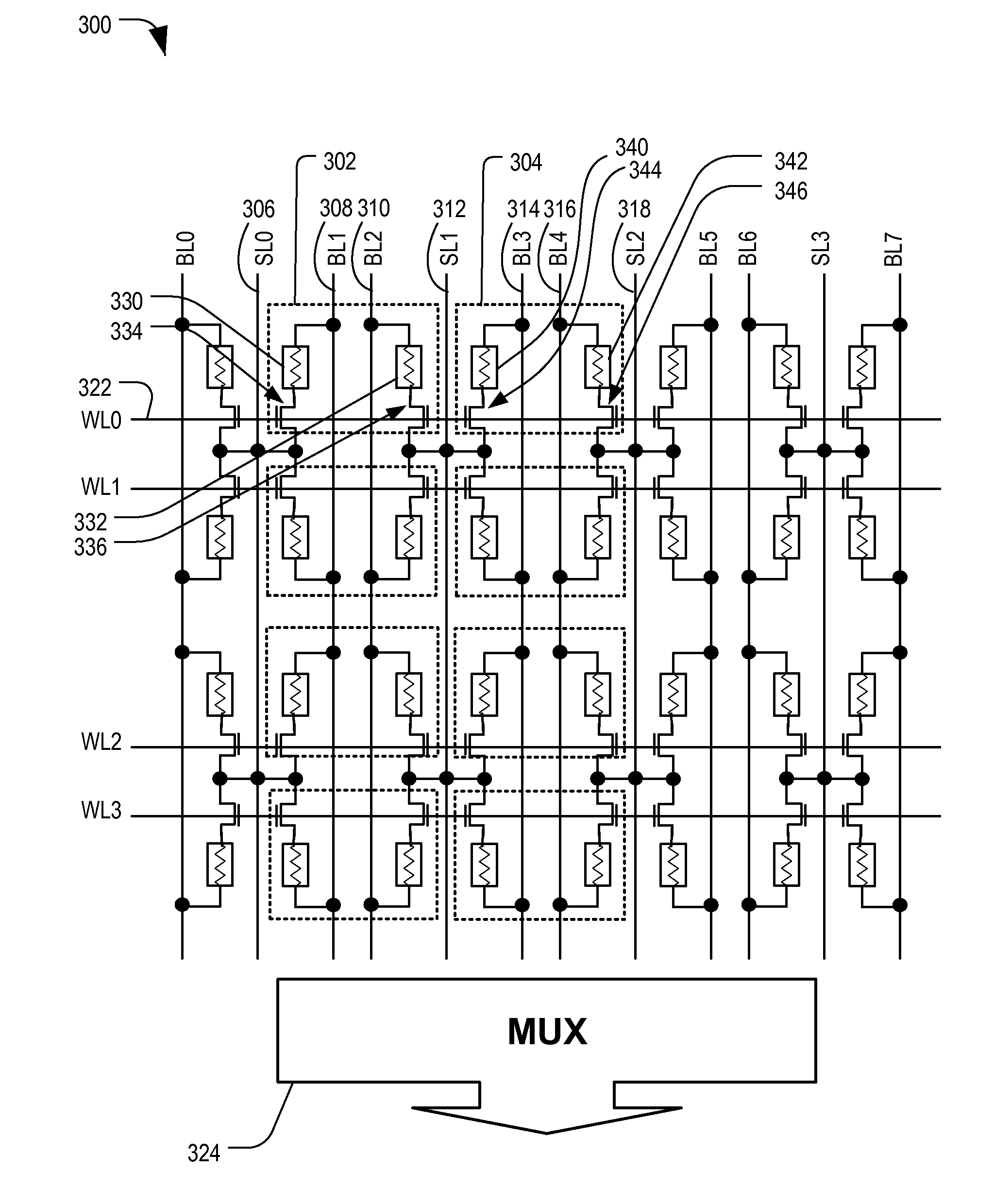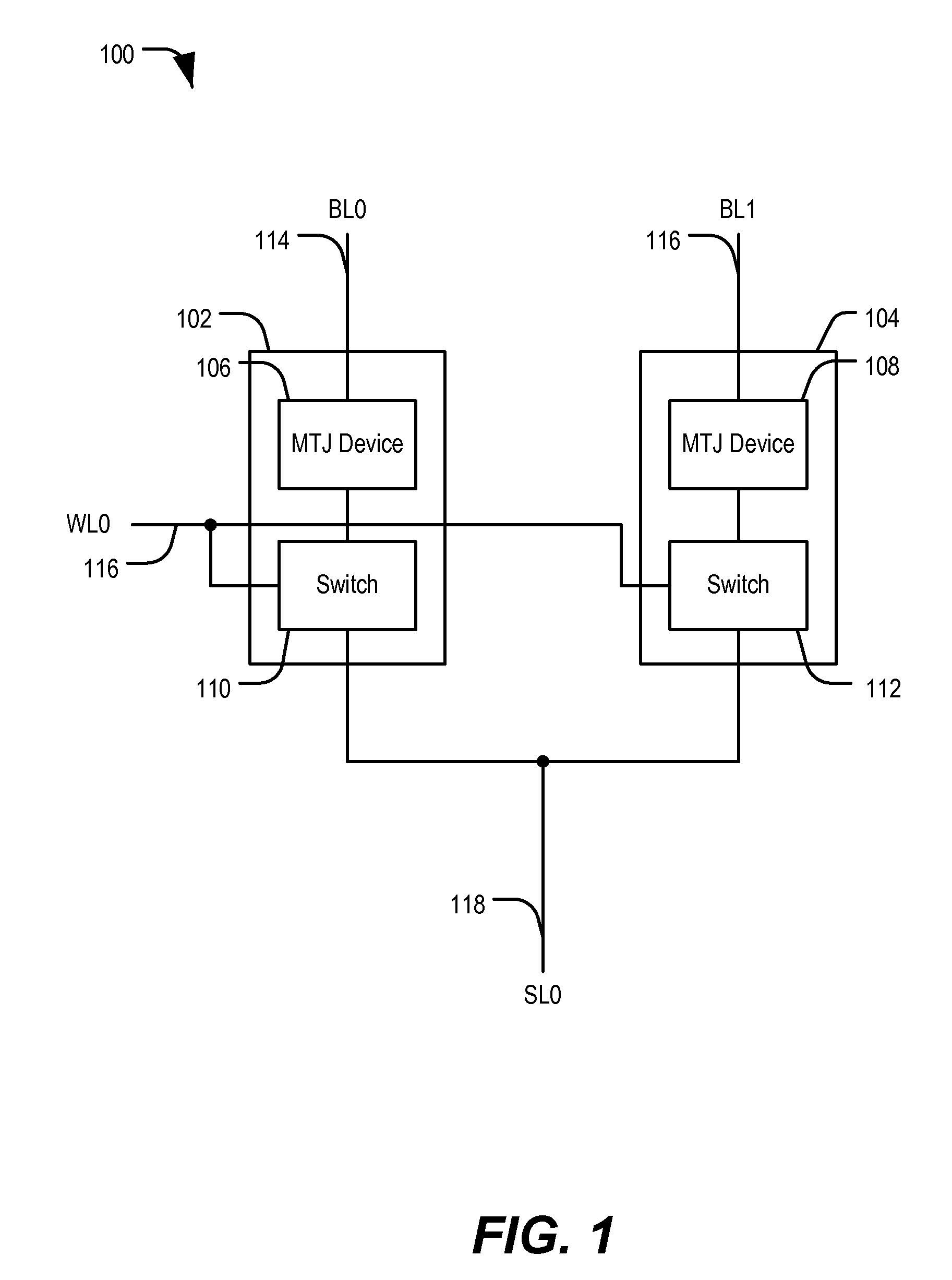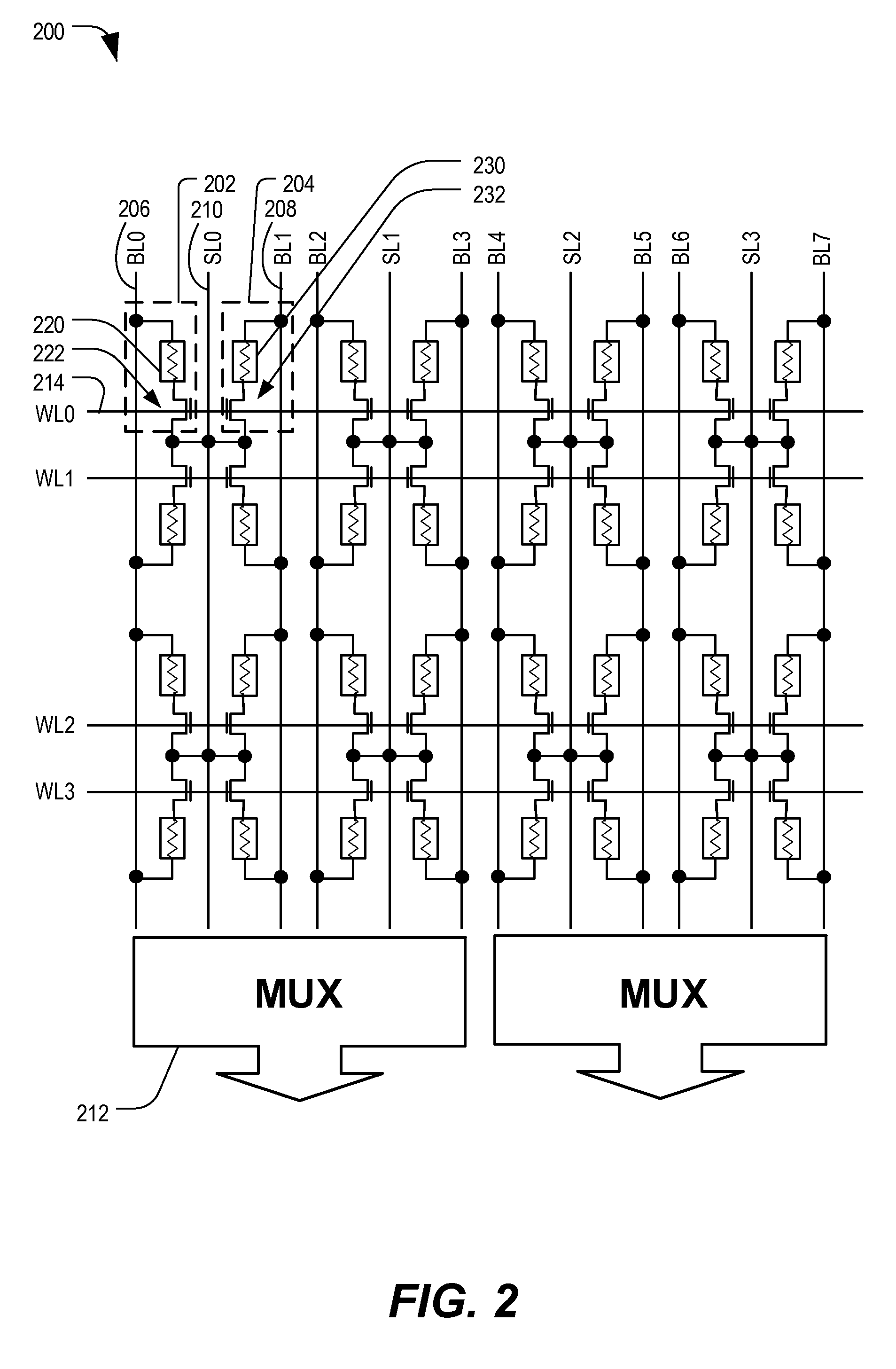MRAM device with shared source line
a random access memory and source line technology, applied in information storage, static storage, digital storage, etc., can solve the problems of low array density resulting from bit line and source line spacing, source lines cannot be connected to ground nor shared across an entire array, and conventional stt-mram devices. achieve the effect of reducing device area, less device area, and increasing array density
- Summary
- Abstract
- Description
- Claims
- Application Information
AI Technical Summary
Benefits of technology
Problems solved by technology
Method used
Image
Examples
Embodiment Construction
[0016]Referring to FIG. 1, a block diagram of a particular illustrative embodiment of an MRAM device with a shared source line is depicted and generally designated 100. The device 100 includes a first representative memory cell 102 and a second representative memory cell 104. A first bit line (BL0) 114 is coupled to the first memory cell 102. A second bit line (BL1) 116 that is distinct from the first bit line 114 is coupled to the second memory cell 104. A shared source line (SL0) 118 is coupled to the first memory cell 102 and to the second memory cell 104. A word line (WL0) 116 is coupled to the first memory cell 102 and the second memory cell 104.
[0017]The first memory cell 102 includes a magnetic tunnel junction (MTJ) device 106 coupled to the first bit line 114. The MTJ device 106 is also coupled to a switch 110, such as a transistor. The switch 110 is configured to selectively couple the MTJ device 106 to the source line 118 in response to a control signal received via the wo...
PUM
 Login to View More
Login to View More Abstract
Description
Claims
Application Information
 Login to View More
Login to View More - R&D
- Intellectual Property
- Life Sciences
- Materials
- Tech Scout
- Unparalleled Data Quality
- Higher Quality Content
- 60% Fewer Hallucinations
Browse by: Latest US Patents, China's latest patents, Technical Efficacy Thesaurus, Application Domain, Technology Topic, Popular Technical Reports.
© 2025 PatSnap. All rights reserved.Legal|Privacy policy|Modern Slavery Act Transparency Statement|Sitemap|About US| Contact US: help@patsnap.com



